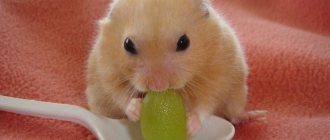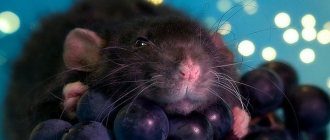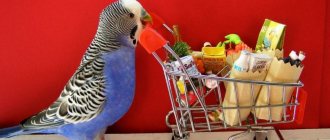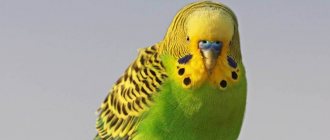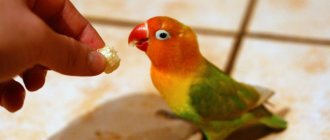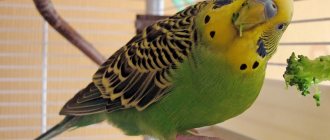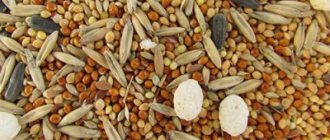Feeding a parrot can be a fun task if you know what you're doing. We all love to watch our pets eat.
There are many foods that you can feed your parrot, and equally, there are many foods that are dangerous for your bird. Knowing what food to feed and what not to feed is key to keeping your bird healthy. Parrots can eat most fruits and vegetables, but there are some common ones, like avocados, that can be harmful to your bird. Another thing that worries most parrot owners is the issue of pesticides.
The answer is yes, parrots can eat grapes. They are safe for your parrot, but should be fed in moderation due to the high concentration of fructose in grapes. This means that you should feed your parrot grapes from time to time only as a treat and not as part of their regular diet.
Grapes are a hit with parrots. They are very sweet and high in fructose, which means these fruits can boost your bird's energy.
Controlling the amount of fructose is not the only reason you should feed grapes sparingly to your parrot. Parrots know that grapes are sweet fruits and they like them, so when you offer grapes along with other food, your bird will only extract the grapes from the mixture and not the more nutritious foods. If you are not careful, this can lead to serious vitamin deficiencies.
Are grape seeds safe for a parrot?
Yes. You can feed your parrot grape seeds without causing any problems. The seeds of these fruits are rich in beneficial nutrients and antioxidants. Therefore, when cutting grapes for poultry, do not forget to put the seeds in the bowl.
If your parrot is still small, be sure to cut the grapes into small pieces before serving. Also, be sure to remove the seeds before feeding them to young parrots because their digestive systems may not be developed enough to break down grape seeds.
Your parrot will also enjoy playing with grape seeds.
Is it possible to give
In the wild, that is, in the Australian savannas, the bird feeds on cereals, tree leaves, herbs and fruits and vegetables. For domesticated pets, the daily diet should be as close to natural as possible.
The base is grain feed: millet, oats, buckwheat, wheat, etc. It should be about 70-80% of the total volume of all food served. The rest is fruits, berries, vegetables. Grapes are one of these additives.
Winemaking is widespread in Australia. Farmers grow both sweet and tart varieties of berries: shiraz, grenache, chardonnay, sauvignon, etc. Birds and budgies in particular are not averse to eating delicious grapes.
With bones
Many people mistakenly believe that grape seeds are garbage that needs to be disposed of. In fact, these so-called wastes contain a number of elements useful to the bird’s body. The proanthocyanidins contained in the seeds have anti-inflammatory and soothing properties, which helps with stomach problems.
Moreover, grape seeds help strengthen the parrot's immune system. Therefore, during the molting period, when the animal is especially weakened, ornithologists recommend mixing bones into your pet’s food. In addition to proanthocyanidins, the set includes vitamins A, E and K, which strengthen the body’s cells.
Kishmish
Considering that a fresh product spoils quite quickly, many people look towards sultanas, that is, dried seedless berries. When drying, some of the useful elements are lost, but the residual set is still impressive.
Kishmish contains:
- pectins;
- sucrose;
- essential oils;
- folic acid;
- vitamins A, B, C and PP;
- organic acids.
Dried grapes are characterized by increased energy value in contrast to the fresh product, so the daily dosage of sultanas should be reduced.
Is it possible to feed a parrot grape skins?
Typically, grape skins are not harmful to parrots. However, I must mention that grapes are classified as one of the most contaminated fruits on the market. According to a recent study, 99% of grapes contained pesticides, and a third of them were at critical levels of pesticide contamination, above what is considered fit for poultry or human consumption. Although the study was conducted in Europe, it is safe to assume that the results may be more or less the same for the rest of the world.
How to properly give a bird berries
Grapes should be added to the diet gradually. In the first week, give one berry at a time, in subsequent weeks increase the dose to 2-3 pieces. You cannot feed your budgerigar grapes alone. It should be remembered that this is just an additive, and the additional volume of the diet consists of grain mixtures.
Experts also recommend alternating berries with other foods - fruits and vegetables. Otherwise, the bird will soon get tired of it. Before serving, the grapes must be washed and doused with boiling water, which minimizes the risk of dangerous microorganisms entering the gastrointestinal tract. The product must be fresh and not stale.
Some farmers, for the sake of yield and weight, generously flavor the berries with nitrates and other harmful chemicals. The human body more or less digests the latter, while birds can be seriously harmed. Therefore, it is better to give preference to trusted outlets and sellers.
In almost any pet store you can buy a special holder for fruits and vegetables. This device makes feeding much easier. The holder will come in especially handy if the budgie is not yet accustomed to human hands.
Is it possible to feed a parrot grape leaves and vines?
Vine leaves and vines are also safe for parrots. If you have a grapevine in your garden, you can feed your parrot more than just the fruits of this plant.
Take a few pieces of vine and offer them to your parrot to chew on. However, the vines should be free of toxins, harmful dirt or rot. Do not feed the vine to your parrot if it has ever been treated with pesticides.
Wash the vines in hot water with a little dishwashing liquid. Scrape everything off the surface, including bird droppings and insects. Allow the vines to dry in the sun before feeding your parrot.
Grapevines are an excellent source of essential nutrients such as vitamin E, vitamin C and iron, which are an excellent source of dietary fiber.
For this reason, even if the skins are harmless, it is recommended to remove them from the grapes before giving them to your parrot to avoid pesticide poisoning.
Is it possible to offer grape branches to the wavy?
Twig food is useful for birds due to the presence of microelements, but with some reservations. The branches should be chosen thicker so that the parrot cannot bite them. The material should be thoroughly disinfected before serving, because vineyards attract parasitic insects.
Grape leaves contain a high concentration of Omega-3 fatty acids, which is beneficial for the joints and cardiovascular system of birds . Therefore, there is no need to cut them off. Through branches, the parrot not only receives additional elements, but also takes care of its beak, which is also important.
What can grapes do to parrots?
Grapes are rich in a variety of nutrients and vitamins and are perhaps one of the healthiest supplements you can include in your parrot's diet. Grapes are also known to have anti-cancer properties.
Below are a few ways grapes can benefit your parrot:
Boosts the parrot's immunity
The resveratrol in red grapefruits may work with vitamin D to boost the activity of a gene responsible for improving immune function.
Regulates your parrot's blood pressure
Grapes are rich in potassium, which lowers blood pressure by controlling the negative effects of salt.
Antioxidants
Grapes are also rich in a wide range of antioxidants, such as polyphenols and carotenoids, which help fight certain types of cancer while promoting heart health. Resveratrol, also found in grapes, is known to suppress the production of free radicals. Grape seeds and skins contain the most antioxidants, so be sure to feed your parrot everything.
Boosts your parrot's eye health
Grapes produce high levels of protective proteins and fewer inflammatory proteins in the retina, the area of the eyes where the photoreceptor cells that respond to light are located.
Improve your parrot's heart health
Resveratrol in grapes helps protect the heart. The high levels of antioxidants in grapes help suppress atherosclerosis (hardening of the arteries). In addition, polyphenols improve heart health by increasing HDL levels and reducing inflammation in poultry. Potassium helps maintain normal blood pressure levels by ensuring smooth blood flow, preventing the risk of heart disease.
Keep your parrot well hydrated
The high potassium content in grapes along with the low sodium levels helps maintain a good electrolyte balance in the body and flush out excess water and other toxins.
Anti-cancer properties
High levels of anthocyanins, stilbenes, flavonoids and other types of antioxidants, especially in dark grapes, help reduce the risk of certain types of cancer. However, most cancers and tumors in parrots are easily treatable.
What other fruits can birds eat?
You can diversify the bird’s diet with other berries and fruits; fortunately, the budgie’s gastrointestinal tract is not as picky as that of other exotic birds. The main thing is that everything should be in moderation. An excess of vitamins and minerals is just as harmful as a lack of them.
Berries and fruits that are beneficial for budgies:
- banana;
- raspberries;
- apricot;
- pear;
- peach;
- plum;
- apple;
- melon;
- orange;
- gooseberry.
Astringent persimmons, potatoes in any form, avocado and mango with papaya are contraindicated for birds. Garlic, herbs and alcohol should also be excluded. When preparing mixtures, do not use sugar and salt.
Can grapes be fatal to parrots?
Although grapes are generally safe for parrots, the concern comes from the way they were grown and produced. Many farmers spray their grapes with enough pesticides and chemicals to kill your parrot instantly. Today, even organic grapes can be dangerous to feed your parrot due to inadequate regulations regarding the use of the word "organic" on food labels.
But again, this is a problem that affects all other fruits and vegetables. Almost all fruits and vegetables are sprayed with pesticides, so before feeding grapes to your parrot, we advise you to wash them thoroughly to remove any traces of pesticides from the fruit skin.
But that doesn't mean you shouldn't trust the word "organic" on a grape label. An “organic” product can mean that the product contains more than 2,200 different USDA-certified organic pesticides, provided that said pesticides are made from compounds produced in nature.
How to train a parrot to eat fruit?
Firstly , it is worth presenting the parrot with fruits in various forms - slices, pureed, large pieces and even in the form of freshly squeezed juice. Experiment and combine the form in which you present food to your pet: rub, mix or give in the form of juice. It is worth noting that the juice is very easily absorbed in the digestive system. For example, green juice from kale and dandelion is best mixed with carrots and apples. The bright orange color of carrot juice and its sweet taste are generally enjoyed by parrots. And the vitamin A contained in the juice boosts the immune system and is a powerful antioxidant. Parrots are able to absorb almost 100% of the beta-carotene in carrot juice, versus 1% when they simply eat fresh carrots.
Secondly , eat healthy foods in front of your feathered pet yourself. The birds' curiosity and the owner as a role model are the best ingredients for persuasion.
Thirdly , use special accessories and holders with which you can bring food into the cage. These are plastic clips and various types of fruit holders in the form of skewers and skewers. Such accessories can be perceived by birds as a fun toy. And the chances that your pet will simply try a new product will increase.
If, despite all your efforts, your feathered friend simply bites off and throws away everything you offer him, do not be upset. In this case, even a drop of juice gets to the parrot. Give the bird time to taste the treat. Your patience and perseverance will be rewarded!
Forbidden and healthy fruits
There are many natural fruits suitable for birds living at home. Figuring out which fruits can be included in a parrot’s diet is not easy.
Utility table
| Fruits | Benefit | In what quantities should I give? |
| Persimmon | Prohibited | — |
| Avocado | Prohibited | — |
| Papaya | Prohibited | — |
| Grape | You can give | No more than 3 berries |
| Banana | Allowed | No more than 2 times a week |
| Cranberry | Can | 5–10 berries per day |
| Strawberry | Allowed | No more than 2 berries per day |
| Watermelon | Can | No more than 20 g per day |
| Melon | Allowed | 20–30 g per day |
It is important for every owner to understand the benefits and harms of fruits needed by budgies. Food common in the natural habitat does not always benefit residents of tropical latitudes in captivity.

